Kit Palmer | March 15, 2017
2016 Honda VFR1200X: FULL TEST
Every day, life is an adventure, not just on the weekends, so we wanted to see what it would be like living life on one of Honda’s newest adventure bikes—the VFR1200X
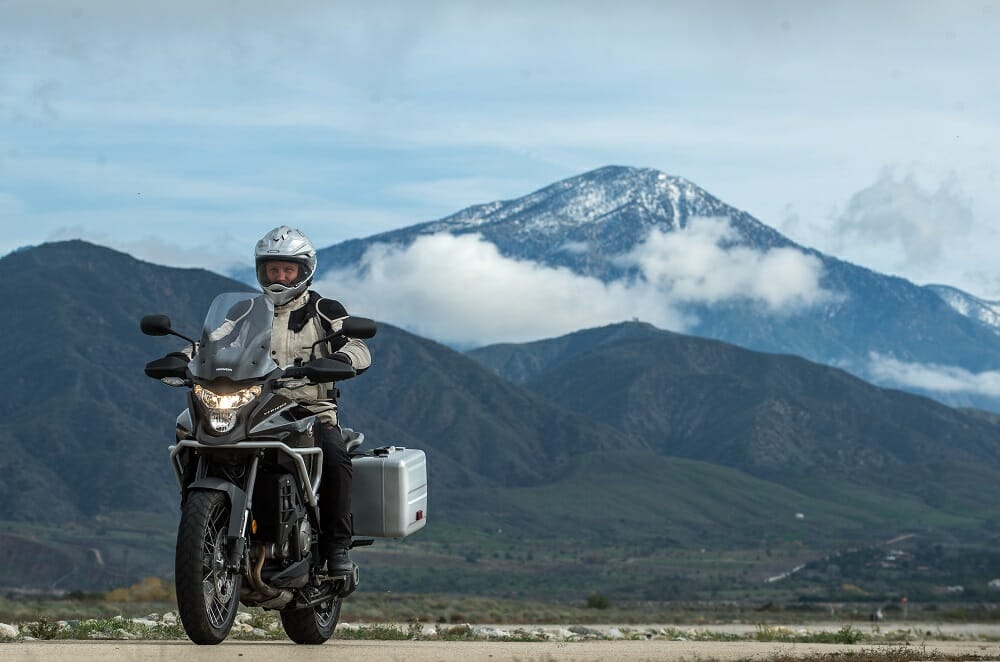 Honda’s “other” adventure bike, the VFR1200X, arrived in the U.S. last year without much fanfare. It deserves more.
Honda’s “other” adventure bike, the VFR1200X, arrived in the U.S. last year without much fanfare. It deserves more.
In May, 2016, the VFR1200X made its unceremonious debut in the United States. Known as the Crosstourer in other parts of the world, the VFR1200X (or Crosstourer) first rolled off Honda’s assembly line in 2012 after being announced at the EICMA Show in 2010. Four years later, we finally get it in pretty much the same form since its everywhere-but-here introduction in 2012.
I used the word “unceremonious” because Honda did little to hype the bike when it first touched U.S. soil back in May, that’s because Honda was busy hyping another motorcycle at the time, the Africa Twin. In fact, the first time I laid eyes on the VFR was at Honda’s Africa Twin world media launch in Moab; Honda had one on hand for us to ride in between stints on the Africa Twin. Unfortunately, I didn’t get the chance to ride the VFR, instead opting to spend every single riding moment in Moab on the Africa Twin, after all, that’s the bike that I came to test. There would be opportunities to ride the VFR later I rationalized, so I stayed focused on the AT.
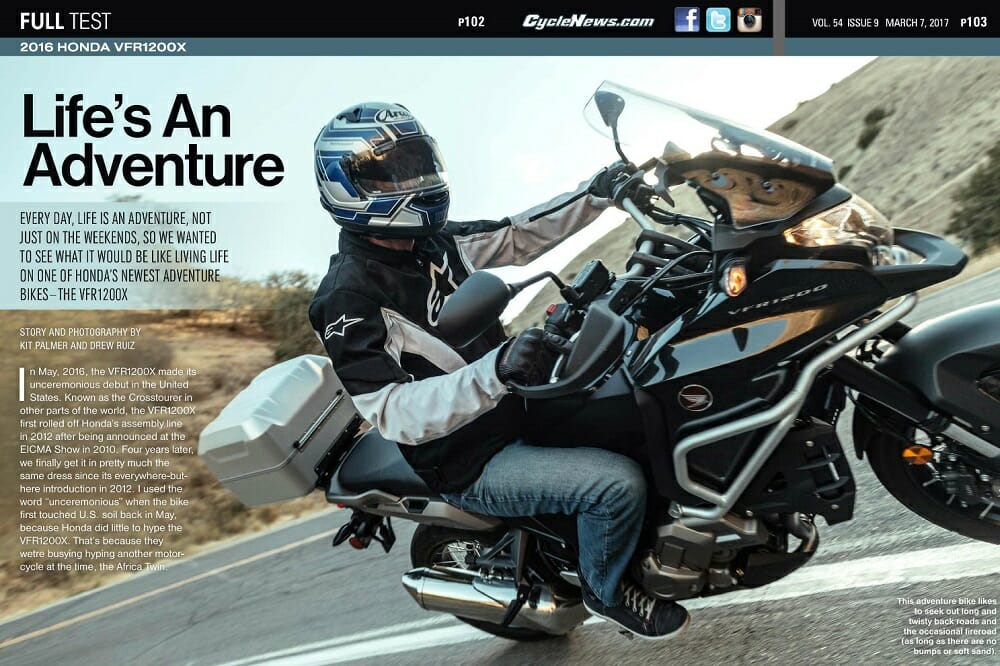
Click here to read this in the Cycle News Digital Edition Magazine.
Story and Photography by Kit Palmer and Drew Ruiz
As it turned out, I was more than right about having my opportunities to ride the VFR. Honda not only gave me the opportunity to ride it but also the opportunity to actually “live” with it and spend months on it riding in the real world. The VFR1200X I rode was a 2016 model, but it returns in 2017 as the exact same motorcycle, except for color. It now comes in red instead of black.
Honda markets that VFR1200X as an adventure-touring motorcycle, because it’s capable of going both on and off road. It’s powered by a 1237cc, 76-degree Unicam V4 engine that was previously used in the VFR1200F, which Honda recently quit selling here in the U.S. In the X, the engine has been re-tuned for more bottom-end and mid-range performance.
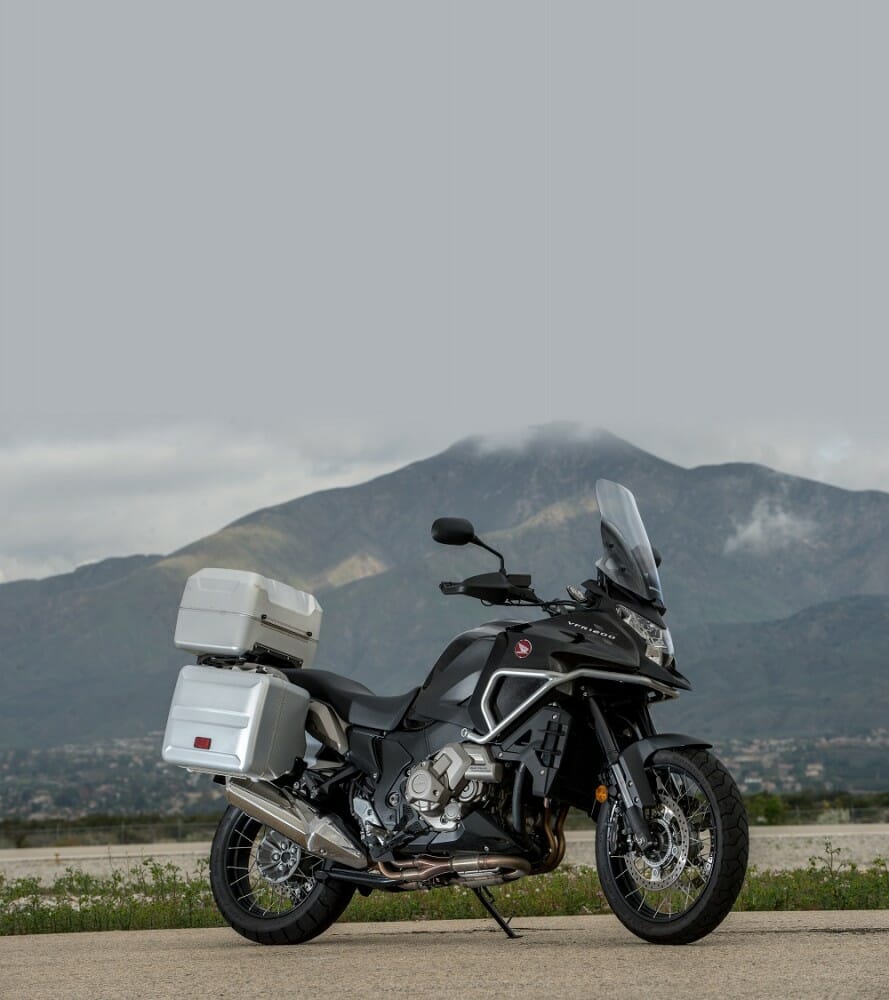 Honda found good use for the VFR1200F engine, which has been re-tuned for improved bottom-to-mid performance for the X.
Honda found good use for the VFR1200F engine, which has been re-tuned for improved bottom-to-mid performance for the X.
The VFR1200X is available with a six-speed manual transmission or, here is the exciting part, with Honda’s Dual Clutch Transmission (DCT) system, also known in simpler terms as automatic transmission. I chose the DCT model. Why? Well, why not? I already know what it’s like riding a manual-shift bike, I’ve been doing that for 40-plus years; I’ve ridden auto bikes before, sure, but never for any real length of time. So, part of the curiosity for me in this test was: what’s it like living with an auto-bike? I found out that it’s actually quite nice!
One of my first experiences on the VFR1200X was a sun-up to sun-down ride from Southern California to Central California, nearly all of it on back-country (aka twisty) roads. It was a large group ride and later that evening, many of my riding companions (some of them a few years younger than me) commented over dinner how tired they were and were planning on calling it an early night. I don’t blame them; it was a long day. Normally I would’ve done the same, but on this night, I was still feeling surprisingly chipper and was down for a few more rounds at the hotel lounge.
 This adventure bike likes to seek out long and twisty back roads and the occasional fireroad (as long as there are no bumps and soft sand).
This adventure bike likes to seek out long and twisty back roads and the occasional fireroad (as long as there are no bumps and soft sand).
The next day, I soloed it home, stopping only twice to fill up on gas, and when I rolled up my driveway that evening, I was still feeling remarkably fresh and had no problem fulfilling a dinner date that I had made with my wife. I kept thinking, why wasn’t I feeling so hammered after two really long days in the saddle? Then it occurred to me that it probably had a lot to do with the VFR’s DCT transmission. Shifting a manual-transmission motorcycle isn’t a big deal and doesn’t require much effort or energy, but when you do it thousands of times in one day, well, it adds up!
Without a doubt, I found the DCT tranny to significantly reduce the workload, a great thing for those long days in the saddle, especially on twisty roads, where the DCT works amazingly well; I felt I was going just as fast through the corners as I would on a manual-shift bike—maybe even faster—once I got used to it. But even if I wasn’t going faster, just the fact that I was saving so much energy not shifting was worth it to me.
If you do want to mix things up a bit, you can switch to manual mode and change gears yourself via the traditional gearshift foot lever that is still there like a “normal” bike (but there is no clutch lever), or via the paddle shifters on the left handlebar, which are great fun to play with. However, when speeds pick up and things get serious, I simply let the DCT do all the shifting work in auto mode while I focused on other things.
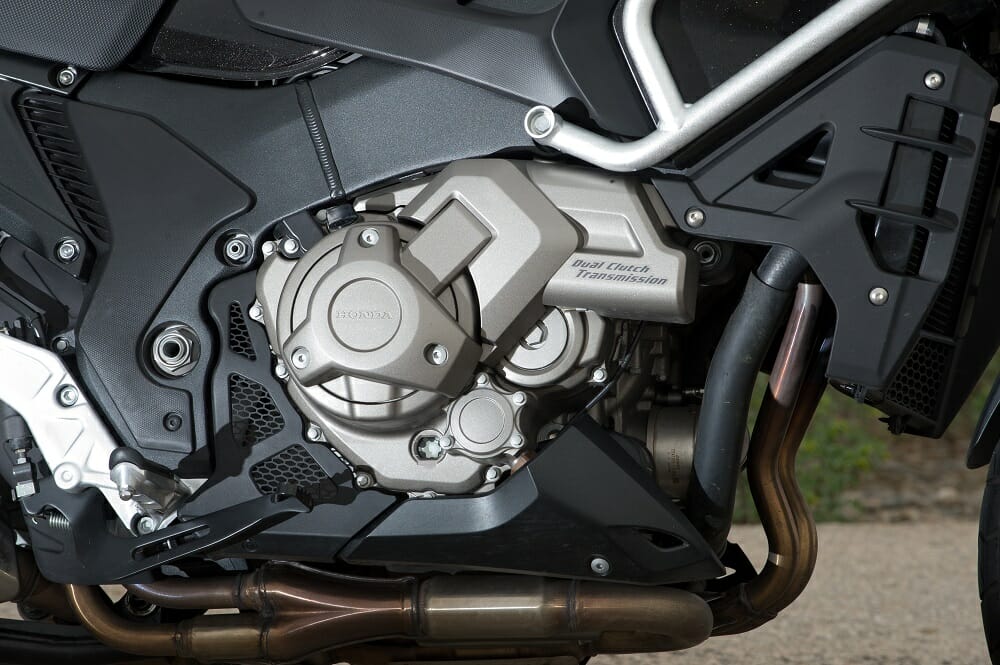 The VFR1200X is offered with a standard manual six-speed transmission or Honda’s Dual Clutch Transmission (DCT). We’ll take the DCT, please.
The VFR1200X is offered with a standard manual six-speed transmission or Honda’s Dual Clutch Transmission (DCT). We’ll take the DCT, please.
But, most of my time on the VFR1200X was in the real world, Monday through Friday stuff, like zig-zagging through traffic and splitting lanes on my way to work, or just running errands around town, where, again, the DCT transmission is nice to have. In these situations, I didn’t miss one bit pulling in a clutch lever and tapping a foot shifter every three seconds. I thought I would miss it, but, to be honest, I just didn’t. Maybe I’m just getting lazy, or maybe I just like doing—or, in this case, not doing—something different, like riding an auto bike.
A lot of the enjoyment came by just how well the DCT transmission works in general. Gear shifts are seamless and the transmission is matched well to the bike’s power, though in Drive mode (there are two main modes: Drive and Sport), sometimes I feel shifts came a tick too early—a fuel-saving trick. I generally rode the bike in Sport mode, where each gear revs out a little longer. (There are also three levels within Sport mode, so you can vary the length of each shift even more.)
In general, the Honda’s DCT transmission, now in its third generation, works extremely well and is much smoother than the previous versions. Sometimes the DCT gets a little confused if you grab a handful of throttle at odd times, and downshifts aren’t quite as smooth as upshifts (but, hey, that’s the same with manual-shift bikes), but, overall, the DCT transmission is an amazing piece of mechanics.
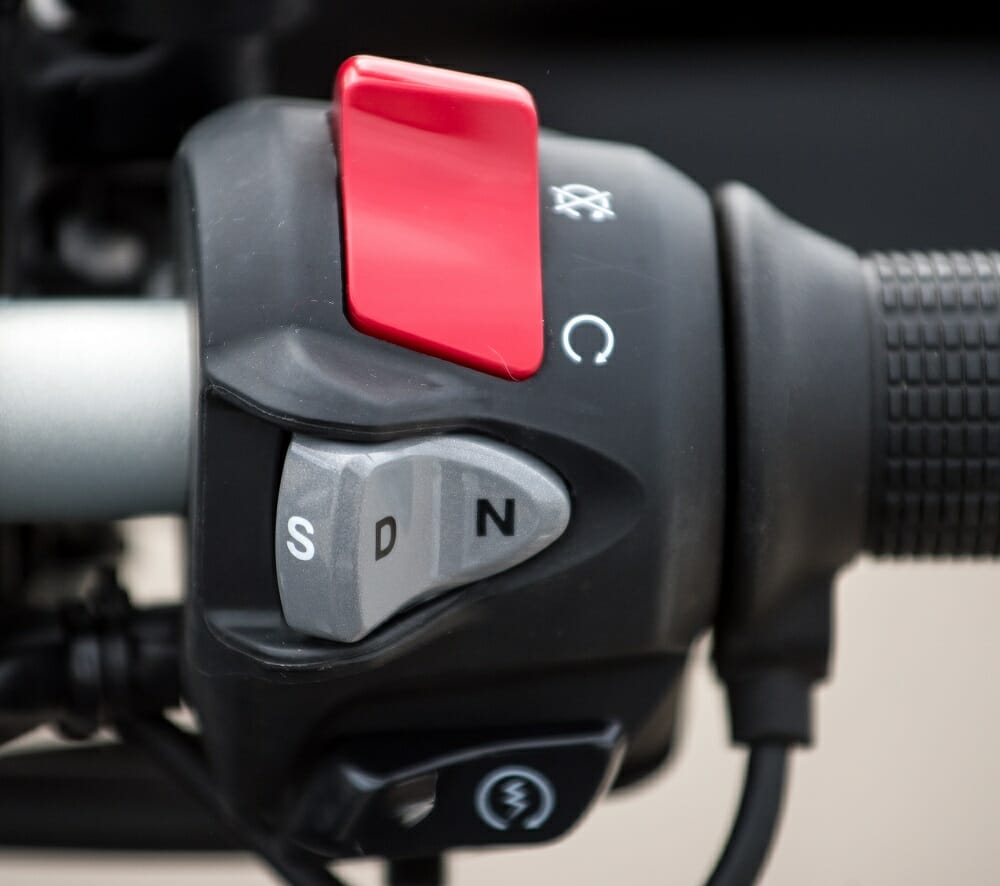 Sport, Drive and Neutral. Not much to it.
Sport, Drive and Neutral. Not much to it.
And so is the VFR’s engine. It pumps out a healthy dose of power and has gobs of bottom-end and torque. It’s still plenty fast on top but it’s not a high-end revver; redline is just 9000 rpm, but you’ll never feel the need to get to that point. It’s a bottom-to-mid engine that always feels relaxed in motion but is always ready to respond whenever you open the throttle, at any rpm, in any gear, which is something you never have to worry about when you’re on the VFR.
However, if you do want instant revs to make a quick pass, or get serious with a turn, you can tap the downshift handlebar paddle (or the foot shifter if you want) a couple of times, wick the throttle, finish up business and let things—the transmission—settle back to normal again, which it does on its own after a few seconds. You don’t have to switch into any kind of manual mode to make physical shifts while you’re in auto mode, but when you do select manual, you have to make all of the upshifts yourself (however, the transmission will still downshift for you if you roll up to a stop sign and forget to tap the foot lever).
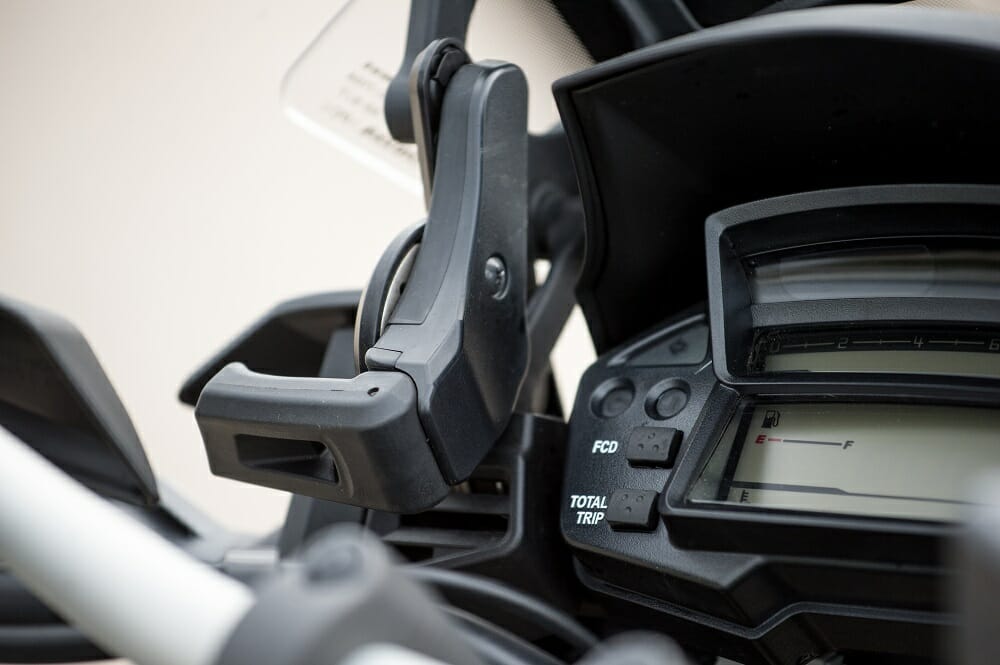 With one hand you can easily adjust the height of the very effective windscreen with this mechanical lever.
With one hand you can easily adjust the height of the very effective windscreen with this mechanical lever.
I was very impressed with the VFR’s reaction to on/off throttle. Fueling is precise, and I thought there was a good connection between the motor and the transmission, meaning the transition from closed throttle to open throttle is smooth, not herky-jerky like with most other auto-trans bikes and scooters. This is great for low-speed situations, like when you’re squeezing your way through stopped traffic on the I-405 freeway.
Another point that probably factored into my feeling so “fresh” after a long ride on the VFR is vibration—or the lack of vibration. Very little buzzing is felt through the bars, seat or footpegs. And yet another factor is ergos. The bike feels as though it was built specifically for my 6’1” frame, it was that comfortable. It has a fairly low 33-inch seat height, so it should fit a wide variety frames just as well as it does mine. Plus, I like the seat, which is semi-wide and just soft enough. The windscreen does its job nicely and is fully adjustable via a manual lever that is reachable from the cockpit and operate-able with one hand, but the accessory heated grips (yeah!) don’t get hot enough (ahhh) on real cold days; they are no match for heavy winter gloves.
Lacking in the comfort department, however, is the absence of cruise control. For some that might be an issue, but for me, it wasn’t at all. For a long time, I wasn’t even aware that it didn’t have it!
Hand guards are a nice touch, for sure, but their presence might suggest that the VFR is capable of going off road. Think again.
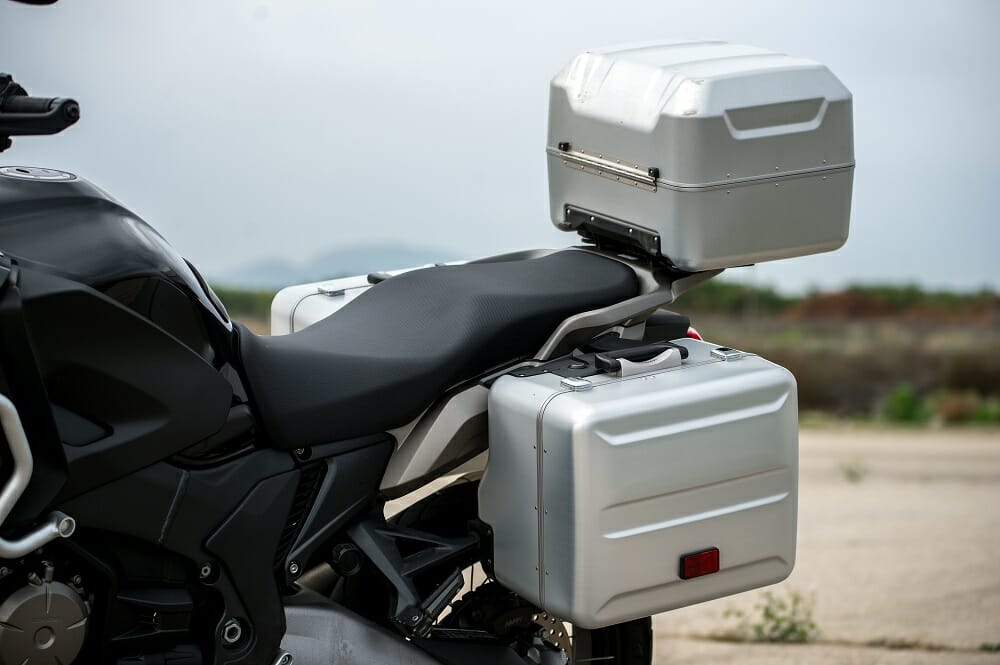 The accessory Honda bags and trunk aren’t pretty, but we can tell you that they are built tough.
The accessory Honda bags and trunk aren’t pretty, but we can tell you that they are built tough.
Yes, Honda calls the VFR1200X an adventure bike, and adventure bikes are normally capable of tackling some moderately challenging dirt roads, but not the VFR. I found it was best to leave the adventure to the pavement on the VFR, or you will indeed have a real adventure on your hands, but not the fun kind. The VFR really isn’t meant to go off road—it’s just too heavy and the suspension isn’t designed for it, neither are the tires. A really well-maintained fireroad is about all the VFR can handle without scaring the bejesus out of you.
As I mentioned, the VFR is heavy, Honda says 631 pounds, ready to ride (about 23 pounds less for the manual-trans VFR). The VFR’s excessive weight, however, is more of a factor on the dirt than it is on the tarmac, where you don’t notice it nearly as much. That’s because the bike is well balanced and handles like a much smaller motorcycle.
Suspension, on the other hand, isn’t as smooth as the rest of the bike; I found it to lack any sort of plush feel over the smaller ripples and square-edge hits, though it did soak up some of the bigger G-outs okay. I admit, that I didn’t fiddle with the adjustments (both the shock and fork feature preload and rebound damping adjustability) as much as I should have, so I will give it the benefit of the doubt in the big picture. However, for the dirt, there is no doubt. This is a street bike.
The VFR uses a linked ABS braking system that I found to work beautifully; it’s strong, smooth and very predictable, and you have great control at both ends. Unfortunately, ABS cannot be turned off, increasing the VFR’s ineffectiveness in the dirt.
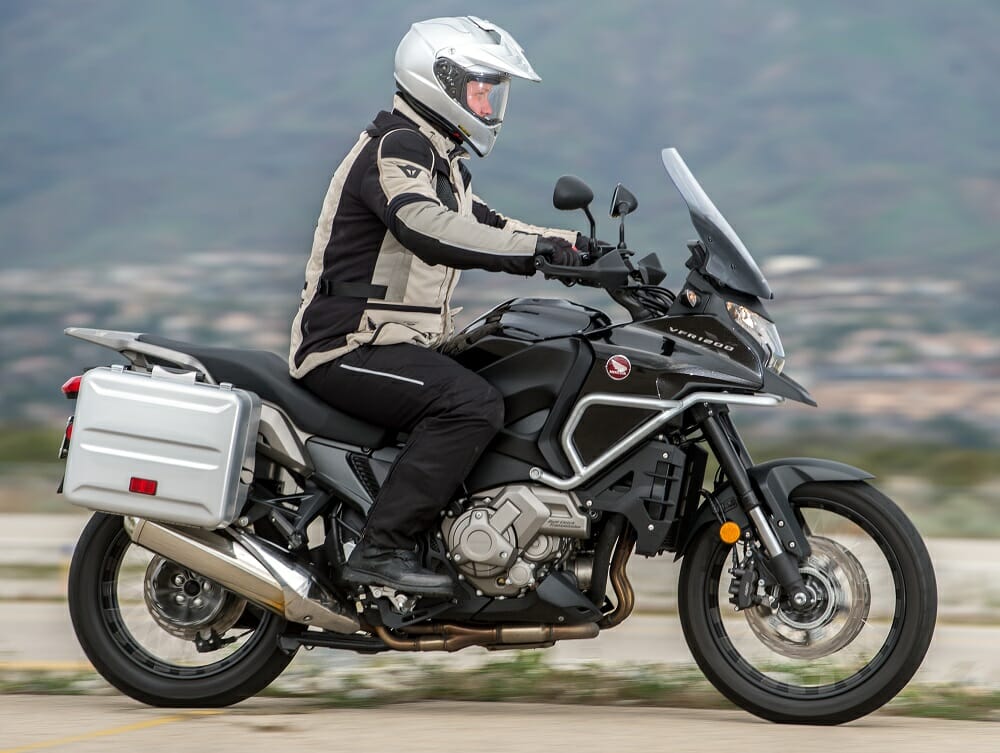 The VFR1200X is one of Honda’s best-kept secrets.
The VFR1200X is one of Honda’s best-kept secrets.
Traction control, aka Honda Selectable Torque Control, can be disengaged, however, via an easy-to-reach button on the left fairing. There are three levels of control (not including off), and I found Level 3 (the least about of intervention) to my liking most of the time.
My VFR was fitted with Honda accessory aluminum saddlebags and trunk. Since most of my riding on the VFR involved lane-splitting, I rarely rode with the side bags in place; they stick out quite a bit. The trunk, however, pretty much lived on the bike. Keep an eye on the four bolts that attach the trunk to the rear rack. One time, my trunk passed me through a corner on a dirt road with my laptop inside it. The laptop survived and the trunk only had a few scratches and no dents. Pretty tough, but check those bolts.
I love the fuel range of the 5.7-gallon tank. Two-hundred miles on a tank is pretty much guaranteed under any situation; I managed it easily a number of times.
Another handy feature is an accessory socket, which is something I used a lot to power my cell phone while I used it for navigation using an aftermarket mount.
After riding the VFR for so much, I was curious as to how I would adjust to manual shifts bikes again; would it be like learning how to shift and use the clutch all over again? No, not even close, other than a few late actions with the clutch rolling up to a stop, riding an auto bike does not turn you back into a beginner again. And it’s just as easy adapting to the DCT Honda; in fact, it’s a fun transition.
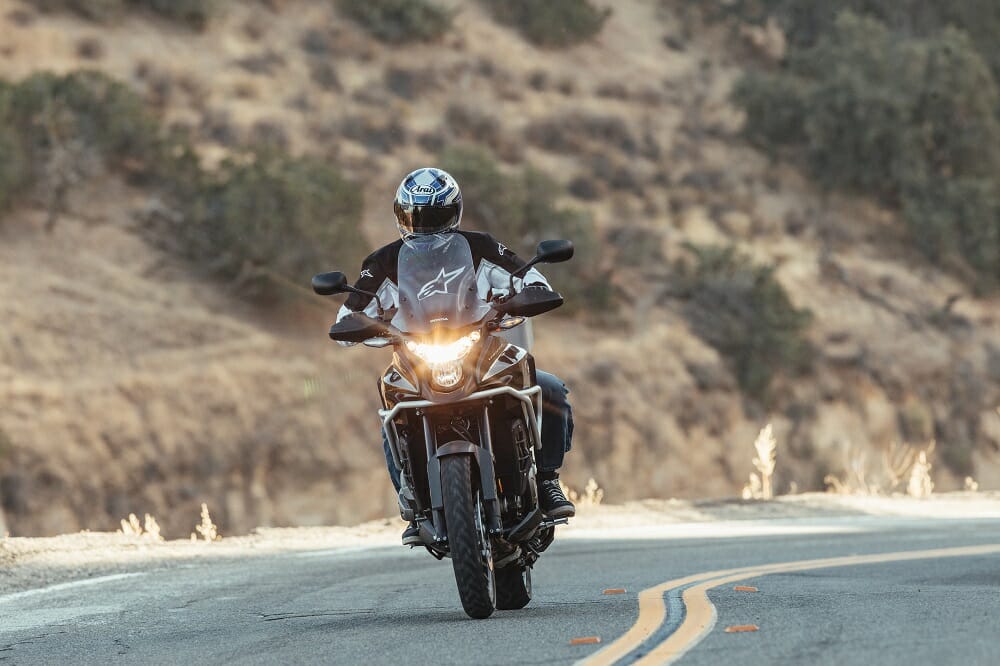 Comfort is one of the VFR1200X’s strongpoints.
Comfort is one of the VFR1200X’s strongpoints.
I enjoyed every minute I had with the VFR1200X. It’s one of the most user-friendly everyday-bikes that I’ve ever ridden, and I was surprised by how much I enjoyed the DCT transmission for everyday use and on the weekends. In fact, the more I rode the VFR, the more l appreciated the DCT transmission for what it could do and for what it has to offer; it makes your life a lot easier for those mundane day-in and day-out commutes, while still being a blast for the weekend fun rides. Of course, I’m not saying that we should replace shift bikes with auto bikes; hell no, but I do feel that auto bikes do have their place, and the VFR1200X is definitely one of those places.
Pretty much everything else about the VFR1200X is right on the money, though improving suspension a little bit and reducing weight should be on the top Honda’s to-do list when it comes time to revamp the VFR1200X in the future. Still, it’s a serious adventure bike worth considering if you don’t mind sticking to the pavement. CN

|
SPECIFICATIONS: 2016 Honda VFR1200X ($15,999 / $16,399 DCT)
|
|
ENGINE TYPE:
|
Liquid-cooled, 4-stroke, Unicam, 16-valve, V-4
|
|
DISPLACEMENT:
|
1237cc
|
|
BORE & STROKE:
|
81mm x 60mm
|
|
INDUCTION:
|
PGM-FI electronic fuel-injection
|
|
IGNITION:
|
Electronic
|
|
COMPRESSION RATIO:
|
12:01
|
|
TRANSMISSION:
|
6-speed / Honda Automatic DCT transmission (optional)
|
|
DRIVE TRAIN:
|
Enclosed shaft
|
|
CHASSIS:
|
Twin-spar frame
|
|
FRONT SUSPENSION:
|
43mm inverted telescopic fork w/hydraulic damping, preload and rebound damping adj.
|
|
REAR SUSPENSION:
|
Pro-Link w/gas-charged damper, preload and stepless rebound damping
|
|
FRONT BRAKE:
|
Dual 310mm discs, combined ABS
|
|
REAR BRAKE:
|
Single 276mm disc, combined ABS
|
|
FRONT TIRE:
|
110/80-R19
|
|
REAR TIRE:
|
150/70-R17
|
|
RAKE / TRAIL:
|
28.0° / 107mm
|
|
WHEELBASE:
|
62.8 in.
|
|
SEAT HEIGHT:
|
33.5 in.
|
|
WEIGHT:
|
608 lbs. (standard transmission) / 631 lbs. (DCT)
|
|
FUEL CAPACITY:
|
5.68 gal.
|
|
AVAILABLE COLORS:
|
Black (2016) / Candy Red (2017)
|